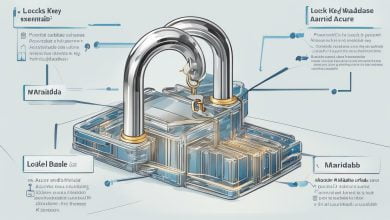
As a developer, you understand the importance of API development and the role it plays in modern software architecture. However, creating a successful API involves much more than just writing code. It requires careful planning and execution throughout its entire lifecycle, from design and development to testing, deployment, maintenance, and updates.
That’s where mastering best practices for .NET API lifecycle management comes in. By following these practices, you can improve the quality, reliability, and scalability of your APIs and ensure they meet the needs of your consumers.
In this article, we will explore the best practices for .NET API lifecycle management and provide real-world examples of organizations that have successfully implemented them. We’ll cover topics such as API design, development, testing, deployment, maintenance, and updates, and highlight the importance of each stage in the API lifecycle.
By the end of this article, you’ll have a better understanding of how to create and manage successful .NET APIs, and the tools and techniques you can use to ensure their success. Let’s delve into the world of .NET API lifecycle management together!
Understanding the .NET API Lifecycle
In order to effectively manage .NET APIs, it is important to have a comprehensive understanding of the .NET API lifecycle. This lifecycle consists of several stages, each of which plays a crucial role in the development and maintenance of APIs.
The Stages of the .NET API Lifecycle
There are typically five stages involved in the .NET API lifecycle:
- API design: This is the stage where the API’s features, functionality, and architecture are defined.
- API development: This is the stage where the API is built based on the design specifications.
- API testing: This is the stage where the API is tested for quality assurance and validation of its functionality.
- API deployment: This is the stage where the API is deployed to a specified hosting environment.
- API maintenance: This is the stage where the API is monitored, updated, and maintained over time.
Each stage in the .NET API lifecycle requires careful attention to detail and adherence to best practices for optimal results.
Best Practices for API Design and Development
Designing and developing .NET APIs require a structured approach to ensure scalability, performance, and security. Here are some best practices to keep in mind:
Choose the Right Architectural Pattern
Choosing the right architectural pattern is crucial to building a scalable and maintainable API. Use an architectural pattern like REST or GraphQL that suits your requirements and is easy to understand by developers using your API. Furthermore, consider using a microservices-based architecture if you require a highly scalable and decoupled system.
Implement Secure Authentication and Authorization Mechanisms
Ensure that your API is secure by implementing robust authentication and authorization mechanisms. Use standard protocols like OAuth or OpenID Connect to ensure secure communications between your API and consumer applications. Additionally, use a role-based access control (RBAC) mechanism to restrict access to resources based on user roles and permissions.
Ensure Scalability and Performance
Scalability and performance are critical factors to consider when developing APIs. Use caching mechanisms to improve response times, and optimize database queries by indexing frequently accessed data. Additionally, use load testing to ensure your API can handle high volumes of traffic and use APM (Application Performance Monitoring) tools to monitor API performance and diagnose issues.
Document Your API Thoroughly
Effective documentation helps API consumers understand how to use your API and troubleshoot issues. Provide clear and concise documentation with examples of API requests and responses. Use a tool like Swagger or OpenAPI to generate API documentation automatically.
Use Versioning to Ensure Backward Compatibility
Versioning is essential to ensure backward compatibility and manage changes to your API. Use a versioning strategy that aligns with your API consumers’ needs and provide clear documentation of versioning policies. Additionally, consider using semantic versioning to indicate changes in the API that affect backward compatibility.
By following these best practices, you can develop high-quality .NET APIs that meet your business needs and fulfill your API consumers’ requirements.
Testing and Quality Assurance in API Development
Testing and quality assurance are crucial aspects of API development. They ensure that the API functions as expected, is reliable, and secure. In this section, we will explore the best practices for testing and quality assurance in .NET API development.
Test Early and Test Often
Testing should begin early in the API development process and should be performed regularly throughout. This ensures that issues are caught early and fixed before they become more significant problems. It’s crucial to test the API both as individual components and as a whole.
Unit Testing
Unit testing focuses on the smallest parts of the API, such as methods and functions. These tests verify that individual components work as intended. Unit testing helps catch errors early and makes it easier to identify root causes of issues. It also provides a safety net for developers to confidently refactor code.
Integration Testing
Integration testing is performed to ensure the API works seamlessly with other systems, applications, and services. These tests help identify issues that may only arise when the API is integrated with other components. Integration testing is especially important for APIs that are designed to be consumed by external applications or services.
Performance Testing
Performance testing validates that the API can handle expected traffic and workload. These tests ensure that the API meets its performance goals, such as response time and throughput. Performance issues can cause significant problems, so it’s important to identify and address them early before they affect users.
Code Reviews and Automated Testing
Code reviews and automated testing can also play vital roles in the testing and quality assurance process. Code reviews involve having other developers review the code to identify issues and suggest improvements. Automated testing involves writing scripts to test the API automatically. This saves time and ensures that tests are consistently performed according to defined criteria.
Following these best practices for testing and quality assurance can help ensure that the .NET API developed is reliable, secure, and meets its intended purpose.
Deployment Best Practices for .NET APIs
Deploying .NET APIs can be a challenging process, but by following best practices, developers can ensure a smooth deployment experience for their users. Here are some tips for achieving this:
Choose the Right Hosting Environment
When it comes to hosting .NET APIs, there are several options available, including on-premises hosting, cloud hosting, and hybrid hosting. Each option has its benefits and drawbacks, and developers should analyze their requirements before choosing the right option. For instance, cloud hosting can provide scalability and cost-effectiveness, while on-premises hosting can offer more control and security.
Establish Continuous Integration and Delivery Pipelines
Implementing continuous integration and delivery (CI/CD) pipelines can help streamline the deployment process and reduce the risk of errors. CI/CD involves automating the build, testing, and deployment of the API, ensuring that developers can quickly and safely move code changes from development to production. By using tools such as Jenkins, Azure DevOps, or CircleCI, developers can automate the process, making it more efficient and hassle-free.
Implement Versioning and Backward Compatibility Strategies
Versioning and backward compatibility are essential for APIs that have multiple consumers. Developers should make sure that any changes they make to the API do not break or affect the existing functionality. They should introduce versioning strategies that allow consumers to migrate at their own pace and provide support for deprecated features. By doing so, API developers can ensure that their users can smoothly transition to newer versions of the API.
Conclusion
By following best practices for deployment, developers can ensure that their .NET APIs are delivered smoothly and efficiently. Choosing the right hosting environment, establishing CI/CD pipelines, and implementing versioning and backward compatibility strategies are just a few of the key aspects to consider. By prioritizing these concerns, developers can build APIs that are scalable, secure, maintainable, and user-friendly.
Maintaining and Updating .NET APIs
Once a .NET API has been deployed, it must be maintained and updated to ensure its continued success. This involves addressing bugs, introducing new features, and keeping the API in line with changing business needs and consumer expectations.
To maintain an API effectively, it is important to establish a proper bug reporting and tracking mechanism. Bugs can arise due to numerous reasons, such as incorrect assumptions, incomplete requirements or changes to the underlying infrastructure. Upon receiving a bug report, it is essential to identify the root cause and take corrective measures on a priority basis.
When updating .NET APIs, care must be taken to minimize the impact on existing consumers. This is where versioning and backward compatibility strategies become crucial. Depending on the impact of the changes, one may choose to introduce a new version of the API or modify the existing one while ensuring backward compatibility. Proper communication with API consumers is also vital to avoid disruption and ensure a smooth transition to the updated API.
Furthermore, maintaining comprehensive documentation of the API is paramount. Documentation should cover all aspects of the API, including its purpose, how to use it, and any potential limitations. This information should be made readily available to API consumers, thereby helping them better understand and leverage the API.
In summary, maintaining and updating .NET APIs is a critical part of the API development process. It involves fixing bugs promptly, introducing new features, and ensuring that the API remains relevant. Effective communication with API consumers, proper versioning and backward compatibility strategies, and comprehensive documentation are all key ingredients to success.
Real-World Examples of .NET API Lifecycle Management
Now that we’ve explored the best practices for .NET API lifecycle management, let’s take a look at some real-world examples of organizations that have successfully implemented these strategies.
Example 1: Company X
Company X is a software development firm that specializes in building .NET APIs for enterprise clients. To ensure high-quality and timely delivery of their products, they have implemented a rigorous API development process that includes all the stages of the lifecycle management.
For API design and development, they conduct thorough research, follow the SOLID principles, and ensure scalability and performance through continuous load testing. They also prioritize security by implementing OAuth 2.0 and JWT-based authentication.
In terms of testing and quality assurance, they use automated testing tools, conduct code reviews, and perform manual testing to verify the functionality, security, and performance of their APIs.
For deployment, they use a continuous integration and delivery pipeline and ensure backward compatibility through API versioning. They also make sure that their APIs are hosted in a secure and stable environment.
With these practices in place, Company X has been able to consistently deliver high-quality APIs to their clients.
Example 2: Start-up Y
Start-up Y is a small tech start-up that has developed a .NET API for a niche market. To ensure that their API provides the best possible service to their customers, they have implemented a lean yet effective API lifecycle management process.
They have adopted an iterative approach to API design and development, regularly incorporating feedback from their customers to improve the functionality and performance of their API.
For testing and quality assurance, they use a combination of manual and automated testing and prioritize testing on different platforms, browsers, and devices. They also conduct load testing to ensure scalability.
In terms of deployment, they use a cloud-based hosting platform and have implemented a continuous delivery process to facilitate updates and bug fixes. They also have a clear versioning and backward compatibility strategy in place.
By adopting these practices, Start-up Y has been able to rapidly iterate and improve their API to meet the needs of their customers.
Example 3: Organization Z
Organization Z is a non-profit that provides a .NET API for social welfare programs. To ensure that their API is secure, scalable, and meets the needs of their beneficiaries, they have implemented a comprehensive API lifecycle management process that includes regular updates and maintenance.
For API design and development, they prioritize accessibility and ease of use, ensuring that their API is simple and intuitive for non-technical users. They also conduct regular user testing to obtain feedback on their API’s functionality and performance.
In terms of testing and quality assurance, they regularly conduct security audits and testing to ensure that their API is secure and free of vulnerabilities. They also prioritize accessibility testing to ensure that their API is usable by all users.
For deployment, they use a hybrid hosting environment that balances security and scalability. They also have a clear versioning and backward compatibility strategy, ensuring that updates do not disrupt the services they provide to their beneficiaries.
Through following these practices, Organization Z has been able to effectively use their API to deliver social welfare programs to those most in need.
Conclusion
As we have seen throughout this article, following best practices for .NET API lifecycle management is critical to the success of API development. From API design to maintenance, implementing these practices can lead to increased performance, scalability, and security.
By looking at real-world examples of organizations that have successfully implemented these practices, we can see the benefits of following a structured approach to API development. From choosing the right hosting environment to effective communication with API consumers, each step in the lifecycle is important.
It is important to remember that the API development process is constantly evolving and requires ongoing maintenance and updates. By implementing the strategies outlined in this article, developers can ensure that their APIs remain relevant and continue to provide value to users.
In conclusion, it is clear that .NET API lifecycle management is an essential component of API development. By following best practices and utilizing real-world examples, developers can streamline their API development processes and ensure the success of their APIs.






